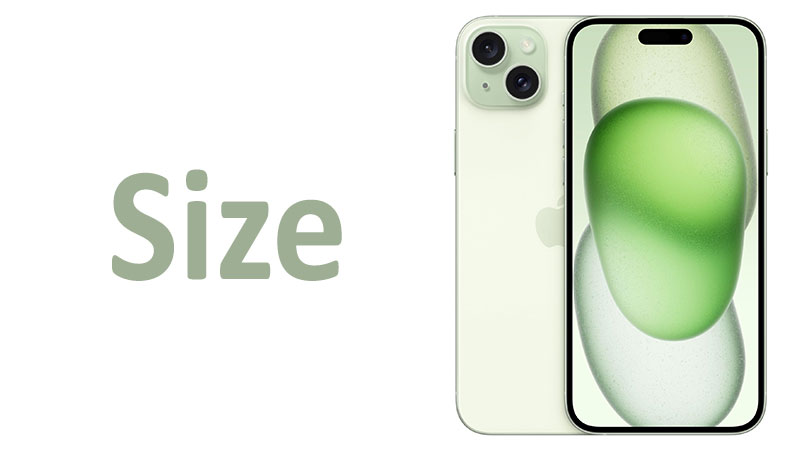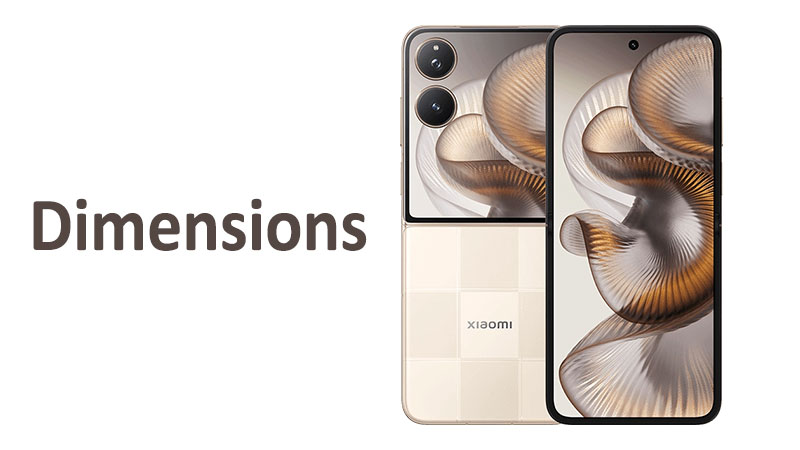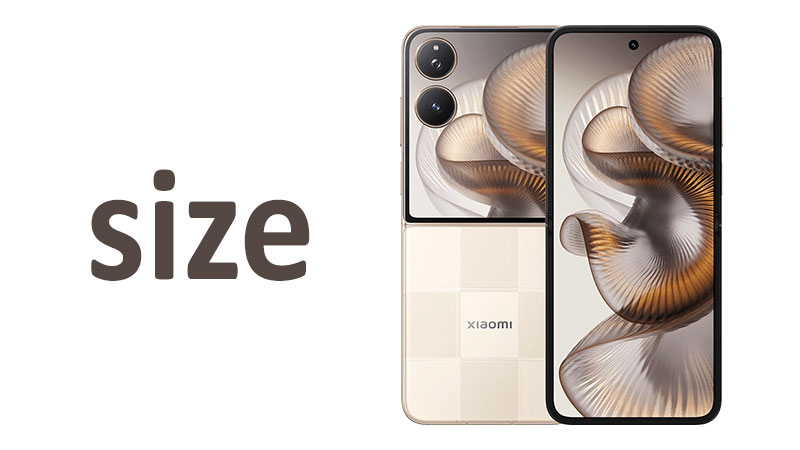Apple iPhone 15 Plus size information is critical for any potential buyer. Understanding the physical dimensions and display specifications is the first step. This knowledge dictates how the phone feels in your hand. It also affects how content appears on the screen. The iPhone 15 Plus represents Apple’s large-format, non-Pro offering. It targets users who prioritize a huge display and outstanding battery life. This phone provides a premium viewing experience without the Pro model price tag. We will explore every detail regarding its size, dimensions, and display characteristics. We will also compare these features to key competitors.
The Foundation of Form Factor: Dimensions and Design
The overall physical footprint of a smartphone defines its usability. It determines how easily it fits into a pocket or purse. It also governs comfort during extended use. The iPhone 15 Plus features a carefully optimized design. This design manages to maximize screen space while remaining relatively sleek.
Precise Physical Dimensions
The iPhone 15 Plus measures 160.9 mm in height. Its width is precisely 77.8 mm. Finally, its depth or thickness measures 7.8 mm. These measurements translate to 6.33 x 3.06 x 0.31 inches. This form factor places the iPhone 15 Plus firmly in the category of large smartphones.
This size profile is important for several reasons. The 160.9 mm height offers a substantial vertical display area. This makes it ideal for scrolling long articles or social media feeds. The 77.8 mm width, however, requires a deliberate grip. Users with smaller hands may find one-handed operation challenging. Apple keeps the thickness, 7.8 mm, quite slim for a large device. This helps balance the phone’s overall bulk. It allows it to feel less cumbersome than older, thicker models.
Material and Edge Refinements
The iPhone 15 Plus utilizes an aluminum frame. It also features a color-infused glass back. This combination contributes to the phone’s ergonomic improvements. The edges of the phone are slightly contoured compared to its predecessors. This rounded design makes the large phone more comfortable to hold. Sharper edges are less forgiving during long phone calls or media viewing sessions. The refined contours enhance the buyer’s daily interaction with the device.
The phone’s weight is 201 grams. This weight is notably light for a phone of this size. Manufacturers often struggle to keep such large devices below the 200-gram threshold. Apple’s engineering is evident in achieving this light weight. A lighter phone reduces fatigue during single-handed use. It also makes the phone less noticeable when carried in a pocket. This weight is a significant selling point for large-screen enthusiasts.
The Immense Viewing Experience: Screen Size and Display Tech
The display is arguably the single most important component of the iPhone 15 Plus. Its size and technology directly impact media consumption and productivity. Apple uses advanced display technology to ensure a vibrant and clear viewing experience.
The 6.7-inch Super Retina XDR Display
The iPhone 15 Plus boasts a massive 6.7-inch display measured diagonally. This screen size is perfect for immersive entertainment. It offers a generous canvas for movies, games, and photo editing. The underlying technology is Apple’s Super Retina XDR OLED display. OLED technology ensures perfect blacks and extremely high contrast ratios. This produces stunning visual depth in all content.
The resolution is 2796 by 1290 pixels. This high-density resolution delivers sharp, detailed images. The pixel density is roughly 460 pixels per inch (PPI). This figure confirms that individual pixels are indistinguishable to the naked eye. Users enjoy a highly crisp and clear viewing surface.
Screen Area and Screen-to-Body Ratio
The total screen area is 110.2 cm². This physical metric quantifies the usable space. It shows the sheer amount of digital real estate available. This large area boosts multitasking capabilities. It allows users to view more information at once.
The screen-to-body ratio is approximately 88.0%. This figure is crucial for understanding bezel thickness. An 88.0% ratio means the display occupies nearly nine-tenths of the phone’s front surface. The bezels surrounding the screen are therefore very thin. This creates a highly immersive, edge-to-edge viewing experience. It minimizes distraction from the phone’s borders.
Brightness and Visual Fidelity
Apple drastically increased the display brightness on the iPhone 15 Plus. This is a key upgrade over previous non-Pro models. The screen achieves a typical maximum brightness of 1,000 nits. More importantly, it can reach 1,600 nits for HDR content. It peaks at a stunning 2,000 nits outdoors in bright sunlight.
This high outdoor brightness is essential for usability. Users can easily view the screen even on sunny days. This makes checking maps or reading texts outdoors hassle-free. The superior brightness enhances HDR video playback. It ensures cinematic quality with vivid highlights and detailed shadows.
The Arrival of the Dynamic Island
The Dynamic Island represents a major structural change in the display. It replaces the traditional notch cutout found on older models. This pill-shaped area adapts dynamically to show alerts and ongoing background activities. These activities include music playback, calls, and Face ID confirmations.
The inclusion of the Dynamic Island changes the feel of the large screen. It integrates notifications more smoothly into the software. This uses the top screen area more efficiently. The feature transforms a hardware limitation into a versatile software interaction tool. It makes the 6.7-inch display feel even more modern and expansive.
Specialized Comparisons: Size and Feature Analysis
Analyzing the iPhone 15 Plus size in isolation is insufficient. A full understanding requires comparison to its predecessor and key competitors. These comparisons highlight Apple’s design philosophy and the phone’s market position.
Comparison with the iPhone 14 Plus
The iPhone 15 Plus maintains the same core philosophy as the 14 Plus. Both phones prioritize a large screen and extended battery life. The physical dimensions show only minor, fractional changes. The iPhone 14 Plus measured 160.8 x 78.1 x 7.8 mm. The iPhone 15 Plus measures 160.9 x 77.8 x 7.8 mm.
The 15 Plus is negligibly taller and slightly narrower. Crucially, the thickness remains identical at 7.8 mm. The small weight difference is more noticeable. The iPhone 14 Plus weighed 203 grams. The 15 Plus is 201 grams. This two-gram difference contributes to the marginally lighter feel.
The real evolution lies in the screen itself. Both phones share the 6.7-inch size. However, the iPhone 15 Plus screen is functionally superior. The Dynamic Island replaces the older, larger notch. Furthermore, the 15 Plus screen reaches 2,000 nits peak outdoor brightness. The 14 Plus only reached 1,200 nits. This brightness jump dramatically improves daylight visibility.
Comparison with the iPhone 15 Pro Max
The iPhone 15 Plus shares its 6.7-inch screen size with the flagship iPhone 15 Pro Max. This size parity is intentional. It gives buyers access to Apple’s largest display without paying the Pro Max premium. However, the Pro Max introduces key differences based on material and technology.
The 15 Pro Max is physically thicker and heavier due to its advanced camera system and titanium frame. The Pro Max also features ProMotion technology. This allows for a 120Hz adaptive refresh rate. The iPhone 15 Plus retains the standard 60Hz refresh rate. While the 60Hz rate is perfectly adequate, ProMotion delivers smoother scrolling and gaming. Buyers must choose whether the 120Hz refresh rate and titanium build justify the higher price tag. The 15 Plus offers the same expansive view at a more accessible price point.
Comparison with Android Flagships: Samsung Galaxy S23 Plus
Comparing the iPhone 15 Plus size to Android rivals, like the Samsung Galaxy S23 Plus, reveals different priorities. The Galaxy S23 Plus features a slightly smaller 6.6-inch display. Its overall dimensions are 157.8 x 76.2 x 7.6 mm. This makes the S23 Plus marginally shorter, narrower, and thinner than the iPhone 15 Plus.
The Samsung phone is also lighter, weighing 196 grams. This difference of five grams is negligible in daily use. The key disparity is the display technology. While the S23 Plus has a lower resolution (1080p), it offers a 120Hz refresh rate. The iPhone 15 Plus provides a higher resolution and pixel density (460 PPI vs 390 PPI). However, it is limited to 60Hz. Therefore, the iPhone offers sharper static images. The Android competitor offers smoother motion. Buyers must weigh motion fluidity against absolute clarity.
Pros and Cons of the iPhone 15 Plus Size
Understanding the trade-offs of the large form factor is essential. The size affects battery life, portability, and media immersion. Buyers should consider these factors before making a choice.
Pros of the Large Form Factor
The large 6.7-inch display offers exceptional screen real estate. This enhances productivity tasks like document viewing and email triage. Media consumption is a major benefit. Movies and video games feel far more immersive on this display size. The experience is closer to a small tablet than a typical phone. The large physical size allows Apple to install a much bigger battery. This directly translates to excellent, class-leading battery life. Users enjoy extended hours of use between charges. The dimensions and shape provide better internal thermal management. This allows the A16 Bionic chip to sustain peak performance longer during heavy tasks.
Cons of the Large Form Factor
The primary drawback is one-handed usability. Many users find it difficult to reach the top corners of the screen. This often requires shifting the phone in the hand or using the reachability feature. The larger dimensions also impact portability. The phone may not fit comfortably in smaller trouser or shirt pockets. This large size necessitates the use of two hands for secure text entry. Dropping the phone is a higher risk when trying to maneuver it with one hand. The increased size also means accessories, such as cases, are bulkier. This adds to the overall device footprint.
Important Considerations for Buyers and Readers
Consumers considering the iPhone 15 Plus must evaluate specific points related to its size. These details often determine long-term satisfaction with the purchase.
Pocketability and Daily Carry
Assess your typical carrying methods. If you primarily use small front pockets, the 160.9 mm height might be too much. It may stick out of the pocket uncomfortably. If you carry the phone in a jacket pocket or a bag, the size is less of an issue. The 7.8 mm thickness makes the device relatively slim for its class. This is an advantage for minimizing bulk in tight spaces. However, adding a protective case will inevitably increase the dimensions.
Usability and Ergonomics
Try holding the phone before purchasing, if possible. Pay attention to the width of 77.8 mm. This width is the main factor determining comfortable grip. The new contoured edges improve the feel significantly. Users migrating from older, boxier iPhones will appreciate the softer edges. If you spend hours on the phone for calls or gaming, the lighter weight (201g) helps reduce hand strain.
Accessory Availability
The iPhone 15 Plus is a major model in Apple’s lineup. This guarantees wide availability of accessories. However, cases designed for the slightly older iPhone 14 Plus will not fit perfectly. The 15 Plus has fractional dimension changes and a larger camera bump. It is essential to buy accessories specifically marked for the iPhone 15 Plus. The transition to the universal USB-C charging port simplifies cable management. This is a crucial functional change unrelated to the phone’s overall physical size.
The Overall Impact of Size on User Experience
The size of the iPhone 15 Plus is not just a specification. It dictates the entire user experience. Apple designed this phone for a specific type of user who values immersion and longevity.
Media and Gaming Immersion
The 6.7-inch screen is a fantastic platform for media consumption. Watching movies with HDR content is truly cinematic. The large display provides ample room for complex game controls. This is particularly beneficial for action or strategy games. The high brightness ensures that visual details remain clear even in brightly lit environments. This enhanced clarity improves the gaming experience dramatically.
Battery Life and Efficiency
The large internal space accommodates a substantial battery unit. This battery is one of the phone’s greatest strengths. It provides fantastic endurance for all-day heavy use. Users who stream video or use GPS navigation extensively will benefit the most. The superior battery life is a direct consequence of the phone’s generous physical dimensions. This ensures that the device keeps pace with the demands of modern smartphone usage.
The Role of Dynamic Island in Size Management
The Dynamic Island helps maximize the use of the 6.7-inch screen. It removes the static, space-consuming notch. This gives users an active, functional area that blends hardware and software. It proves that Apple continues to find ways to make its large displays feel smart and efficient. The Dynamic Island uses negative space as a feature. This makes the phone feel more contemporary than its predecessor.
Conclusion: Making an Informed Decision
The Apple iPhone 15 Plus size profile is defined by its substantial 6.7-inch display. Its precise dimensions are 160.9 x 77.8 x 7.8 mm. This phone skillfully balances a large screen with a relatively manageable and light body (201g). It is the perfect choice for consumers seeking the benefits of a massive screen and top-tier battery life. This is achieved without paying the premium for the Pro Max features.
Buyers should consider their comfort with two-handed operation. They must also assess their tolerance for a large pocket presence. If media consumption, extended battery life, and superior daylight visibility are priorities, this phone is ideal. It delivers a flagship-level viewing experience. The modern design, coupled with the Dynamic Island, offers a compelling value proposition. It serves as Apple’s ultimate large-screen option for the general consumer. Choose the iPhone 15 Plus if big-screen entertainment is paramount to your daily mobile usage.
Frequently Asked Questions (FAQ)
What is the actual screen size of the iPhone 15 Plus?
The actual screen size is 6.7 inches when measured diagonally. It offers a total viewing area of 110.2 square centimeters.
How does the thickness of the 15 Plus compare to the 14 Plus?
The thickness of the iPhone 15 Plus is identical to its predecessor. Both phones measure 7.8 mm deep, which keeps the profile relatively slim.
Does the iPhone 15 Plus have a better screen-to-body ratio than the standard iPhone 15?
Yes, the iPhone 15 Plus has a screen-to-body ratio of approximately 88.0%. This figure is slightly higher due to its expansive display size.
Is the iPhone 15 Plus difficult to use with one hand due to its size?
The phone’s width of 77.8 mm makes full one-handed operation difficult for most users. Reaching the top of the 6.7-inch display typically requires two hands.
Does the iPhone 15 Plus have the same size screen as the iPhone 15 Pro Max?
Yes, both the iPhone 15 Plus and the iPhone 15 Pro Max feature the same 6.7-inch diagonal display size. They differ, however, in display technology features like the 120Hz refresh rate.



